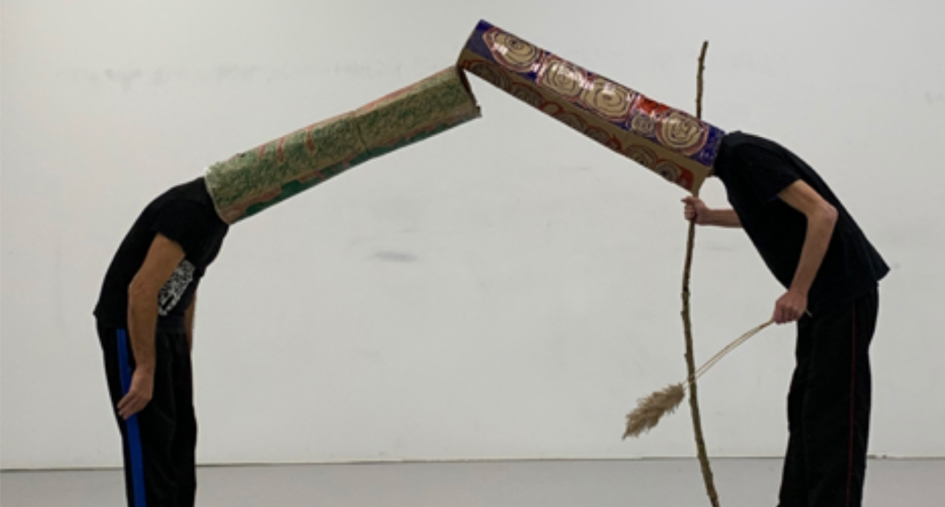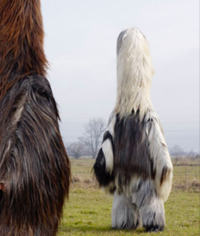
Mascarade/Masquerade
L'animal a l'esquena (Celrà)
From 18/07/2022 to 30/07/2022
Mark Tompkins
( Mark Tompkins )

L'animal a l'esquena (Celrà)
From 18/07/2022 to 30/07/2022
Mark Tompkins
( Mark Tompkins )

ACTIVITY POSTPONED AT THE REQUEST OF THE COMPANY
Mascarade, inspired by the rituals found in ancestral interactions, but also in the daily lives of those who practise them. These are always changing and are unique because they are linked to specific social contexts and are collectively identified with particular symbols.
The photographs of Charles Fréger in his book Wilder Mann moved me with their extreme beauty, but above all because of what they tell us about our lives today. Other work on masks and carnivals, in particular La Maske by Phyllis Galembo, made me ask myself what these ancient and contemporary rituals mean. Do we still need to celebrate the change of the seasons, rites of passage, initiations and so forth? With the inevitable standardisation of the world, will they simply turn into folklore for tourists, or will we find the way to resist and reinvent them?
Mascarade, inspired by the rituals found in ancestral interactions, but also in the daily lives of those who practise them. These are always changing and are unique because they are linked to specific social contexts and are collectively identified with particular symbols.
The photographs of Charles Fréger in his book Wilder Mann moved me with their extreme beauty, but above all because of what they tell us about our lives today. Other work on masks and carnivals, in particular La Maske by Phyllis Galembo, made me ask myself what these ancient and contemporary rituals mean. Do we still need to celebrate the change of the seasons, rites of passage, initiations and so forth? With the inevitable standardisation of the world, will they simply turn into folklore for tourists, or will we find the way to resist and reinvent them?
In Europe, the celebrations of carnival usually take place in winter and are a natural marker of the change from winter to spring, the return of light after darkness and the awakening of nature. If the dead help the fertility of the fields, the living show their respect, wearing masks representing the powers of the underworld that protect people from creatures of ill omen.
In African cultures, masks are complex phenomena, secret and essential. The connection between mask-wearing, religion and socio-political processes in African societies includes rites of fertility and initiation, weddings and funerals, and social and racial harmony. Masks embody ancestral spirits that return to the world of the living, a complex cosmology in which life is a continuous cycle, perpetually mediated by the actions of deities, ancestors and humans.
In America, slave populations used the masquerade to celebrate prohibited ancestral African rituals and also to confuse their masters. Masks and carnival mingled the false and authentic as a means of cultural subversion and rituals sabotaged and undermined the power of their oppressors.
Performers: Zurine Benavente, Rafa Jagat, Mark Tompkins
Concept and director: Mark Tompkins
Choreography: Mark Tompkins, Rafa Jagat, Zurine Benavente
Set, Costumes, Dramaturgy: Jean-Louis Badet
Lighting: Pauline Vauchez
In African cultures, masks are complex phenomena, secret and essential. The connection between mask-wearing, religion and socio-political processes in African societies includes rites of fertility and initiation, weddings and funerals, and social and racial harmony. Masks embody ancestral spirits that return to the world of the living, a complex cosmology in which life is a continuous cycle, perpetually mediated by the actions of deities, ancestors and humans.
In America, slave populations used the masquerade to celebrate prohibited ancestral African rituals and also to confuse their masters. Masks and carnival mingled the false and authentic as a means of cultural subversion and rituals sabotaged and undermined the power of their oppressors.
Performers: Zurine Benavente, Rafa Jagat, Mark Tompkins
Concept and director: Mark Tompkins
Choreography: Mark Tompkins, Rafa Jagat, Zurine Benavente
Set, Costumes, Dramaturgy: Jean-Louis Badet
Lighting: Pauline Vauchez
